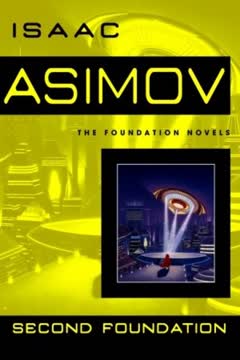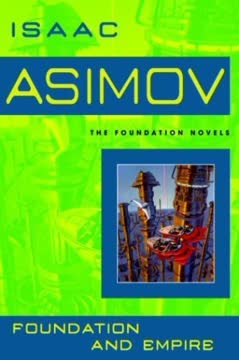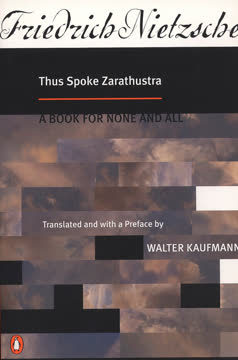Key Takeaways
1. Reality is a construct of consciousness, not physical matter
Consciousness is the basic media from which reality is formed — the fundamental non-material material of existence.
Consciousness as foundation. The author posits that consciousness, not physical matter, is the fundamental basis of reality. This paradigm shift challenges our traditional understanding of the universe. Instead of a material world that somehow gives rise to consciousness, we have a consciousness that gives rise to the appearance of a material world.
Implications of consciousness-based reality:
- Physical laws and phenomena are expressions of consciousness
- The mind-body problem dissolves, as both mind and body are constructs of consciousness
- Paranormal phenomena become potentially explainable within this framework
- Our individual consciousness is part of a larger, universal consciousness
2. The Absolute Unbounded Oneness (AUO) evolves into Absolute Unbounded Manifold (AUM)
AUO was described earlier as everything (the one source) and nothing (no actual individuated thing) simultaneously.
Primordial consciousness evolves. The author introduces the concept of AUO as the primordial, undifferentiated consciousness that evolves into AUM, a more complex and structured form of consciousness. This evolution is driven by the Fundamental Process, which is analogous to biological evolution but applies to consciousness itself.
Key aspects of AUO to AUM evolution:
- AUO starts as a potential energy of consciousness
- The Fundamental Process drives differentiation and complexity
- AUM develops structure, memory, and purpose
- This evolution creates the framework for our reality and individual consciousness
3. Our physical reality is a virtual experience created by consciousness
Space-time is a consciousness interface filter that defines the perception (experience) of Physical Matter Reality (PMR) to participating sentient conscious entities.
Virtual reality analogy. The author suggests that our physical reality (PMR) is akin to a highly sophisticated virtual reality experience created by consciousness. This concept challenges our intuitive understanding of the world but provides a framework for understanding both physical and non-physical phenomena.
Characteristics of this virtual physical reality:
- Space and time are constructs, not fundamental
- Physical laws are like "rules of the game" in this virtual experience
- Our bodies and senses are interfaces to this virtual reality
- Multiple realities or dimensions can coexist within the larger consciousness system
4. Evolution drives the development of consciousness through the Fundamental Process
The Fundamental Process of evolution along with primordial consciousness as a fundamental source of structurable energy are the two basic assumptions on which MY Big TOE is based.
Consciousness evolves. The author proposes that consciousness itself undergoes an evolutionary process, driven by what he calls the Fundamental Process. This process is analogous to biological evolution but operates on consciousness and information rather than physical matter.
Key aspects of consciousness evolution:
- Explores all possibilities and retains what is profitable
- Leads to increasing complexity and lower entropy
- Drives the development of individual consciousness units (like us)
- Operates across multiple "dimensions" or reality frames
5. Free will and intent are key to evolving consciousness
What we do is not of primary importance; why we do it is what counts. The intent or motivation is the choice.
Power of intent. The author emphasizes that our free will choices, particularly our intentions and motivations, are crucial in evolving consciousness. This perspective shifts focus from external actions to internal states of mind and heart.
Implications of free will and intent:
- Our choices directly affect the quality of our consciousness
- Intentions shape our reality more than physical actions
- Evolution of consciousness is driven by intentional choices
- Spiritual growth is fundamentally about improving the quality of our intent
6. Spiritual growth involves reducing the entropy of consciousness
Right motivation and right intent are the only sure path to right action, which produces the right feedback to encourage continued right growth and learning.
Entropy reduction as growth. The author introduces the concept of entropy in consciousness, suggesting that spiritual growth involves reducing this entropy. This provides a quasi-scientific framework for understanding spiritual development.
Key aspects of spiritual growth:
- Lower entropy = higher quality consciousness
- Growth involves making choices that reduce entropy
- Right motivation and intent lead to entropy reduction
- Feedback from our choices helps guide further growth
7. Humans are not superior, but part of a larger consciousness ecosystem
Every critter, including you, has its point and its place; diversity is a natural artifact of evolution when there are few constraints.
Humility in the larger picture. The author challenges human-centric views, suggesting that we are part of a vast consciousness ecosystem. This perspective encourages humility and a broader understanding of our place in reality.
Implications of this view:
- Humans are not the pinnacle of evolution
- Other beings (physical and non-physical) have their own roles and purposes
- Our individual growth contributes to the larger system
- Understanding our place can lead to greater harmony and purpose
8. Belief systems can limit our understanding of reality
Belief is created when one who lacks scientifically evaluated knowledge puts faith in the premise that things actually are as he or she supposes them to be.
Transcending belief limitations. The author emphasizes how our belief systems, whether cultural, religious, or personal, can severely limit our understanding of reality. He advocates for open-minded skepticism and personal experience over blind belief.
Ways beliefs limit understanding:
- Create mental "boxes" that restrict thinking
- Lead to circular reasoning and confirmation bias
- Prevent exploration of new ideas and experiences
- Substitute comfortable pseudo-knowledge for actual understanding
9. Right motivation and intent are more important than actions
If the intent is wrong, then, by definition, the choice (of motivation, not of action) is wrong as seen from the perspective of evolving consciousness.
Primacy of motivation. The author argues that the quality of our consciousness evolution is determined more by our motivations and intentions than by our external actions. This shifts the focus of spiritual growth inward.
Implications of focusing on motivation:
- Actions alone don't determine spiritual growth
- The same action can have different effects based on motivation
- Developing right motivation is key to spiritual progress
- Internal change precedes and shapes external change
10. Pain and suffering often stem from wrong choices and intents
The general rule is that most of the pain in your life is self-inflicted while very little is thrust upon you from the outside.
Self-responsibility for suffering. The author suggests that much of our pain and suffering results from our own choices and intents, rather than external circumstances. This perspective empowers individuals to change their experience through internal change.
Understanding pain and suffering:
- Most suffering is self-created through wrong choices
- External circumstances play a smaller role than we often believe
- Changing our choices and intents can reduce suffering
- Pain can be a feedback mechanism for growth
Last updated:
FAQ
What's My Big TOE about?
- Unified Theory: My Big TOE stands for "My Big Theory Of Everything," aiming to unify philosophy, physics, and metaphysics into a coherent model of reality. It explores the interconnectedness of these fields.
- Consciousness Focus: The book posits that consciousness is the fundamental substance of reality, with everything else, including physical matter, derived from it.
- Digital Reality: Thomas Campbell introduces the idea that our physical reality is a digital simulation created by a larger consciousness system, challenging traditional views of existence.
Why should I read My Big TOE?
- Broadens Perspective: Reading My Big TOE can significantly expand your worldview, challenging existing beliefs and encouraging deeper exploration of consciousness.
- Integrates Science and Spirituality: The book merges scientific principles with spiritual insights, providing a framework for understanding complex concepts in a coherent manner.
- Encourages Personal Growth: Campbell emphasizes the importance of personal evolution and the role of free will in shaping our experiences, inspiring readers to take charge of their own growth.
What are the key takeaways of My Big TOE?
- Consciousness is Fundamental: The book asserts that consciousness is the primary substance of reality, shifting the focus from a materialistic view to one centered on awareness and experience.
- Evolution of Consciousness: It emphasizes that the primary purpose of existence is to evolve the quality of consciousness through experiences and choices.
- Interconnectedness: The text highlights the interconnectedness of all beings, suggesting that individual growth contributes to the overall evolution of the larger consciousness system.
What are the best quotes from My Big TOE and what do they mean?
- “The proof of the pudding is in the eating.”: This emphasizes that the validity of knowledge should be tested through experience and results, not just theoretical understanding.
- “You cannot believe your way into consciousness quality.”: This highlights the importance of personal experience over mere belief, underscoring that true understanding comes from direct engagement.
- “The quality of your being expresses the correctness of your understanding.”: This suggests that personal growth reflects one's understanding of reality, implying that deeper understanding leads to a more evolved existence.
How does Thomas Campbell define consciousness in My Big TOE?
- Primordial Consciousness: Campbell defines consciousness as the fundamental energy that underlies all reality, positioning it as the source from which all experiences arise.
- Digital Nature: He describes consciousness as a form of digital energy capable of self-organization and evolution, aligning with the idea that it is not merely a byproduct of biological processes.
- Individuated Units: The book introduces individuated units of consciousness, which are unique expressions of the larger consciousness system, each with its own experiences and evolutionary path.
What is the Fundamental Process in My Big TOE?
- Evolutionary Mechanism: The Fundamental Process is the mechanism through which consciousness evolves by exploring possibilities and making choices.
- Entropy Reduction: This process is driven by the need to reduce entropy and improve the quality of consciousness, emphasizing growth and development.
- Iterative Nature: It operates iteratively, meaning each cycle of exploration and choice leads to new opportunities for growth, allowing consciousness to adapt over time.
How does My Big TOE explain the relationship between consciousness and reality?
- Reality as Construct: Campbell argues that reality is a construct of consciousness, shaped by the interactions and choices of individuated units of consciousness.
- Interconnected Dimensions: The book describes multiple dimensions of reality, each with its own rule-set, suggesting that our experiences are part of a larger, more complex system.
- Feedback Mechanism: The relationship is dynamic, with feedback loops that influence both consciousness and reality, where choices affect reality and experiences shape consciousness.
What role does free will play in My Big TOE?
- Central to Consciousness: Free will is portrayed as a fundamental aspect of consciousness, allowing individuals to make choices that shape their experiences.
- Influences Quality: The quality of consciousness is directly related to the choices made through free will, with higher quality choices leading to lower entropy.
- Feedback Loop: Free will operates within a feedback loop where the outcomes of choices inform future decisions, vital for the evolution of consciousness.
How does My Big TOE address the concept of belief?
- Belief vs. Knowledge: Campbell differentiates between belief and knowledge, asserting that beliefs can limit understanding and encourages seeking knowledge through personal experience.
- Belief Traps: The book discusses belief traps, where individuals become stuck in their beliefs, warning against dogma and encouraging open-minded skepticism.
- Cultural Influence: Campbell highlights how cultural beliefs shape perspectives and limit understanding, advocating for questioning and reassessing beliefs for personal growth.
What is the significance of the psi uncertainty principle in My Big TOE?
- Interrelation of Consciousness and Reality: The psi uncertainty principle suggests that consciousness influences reality, blurring lines between subjectivity and objectivity.
- Implications for Science: It challenges traditional scientific views, implying that consciousness must be considered in scientific inquiry, especially in fields exploring reality.
- Exploration of Paranormal Phenomena: The principle provides a framework for understanding paranormal phenomena, suggesting they are integral aspects of consciousness interacting with reality.
How does My Big TOE propose to redefine the significance of existence?
- Integration of Mind, Body, and Spirit: Campbell argues for the integration of these elements, challenging traditional separations and promoting a holistic view of human experience.
- Purpose and Meaning: Understanding existence involves exploring the purpose and meaning behind life experiences, leading to greater self-awareness and fulfillment.
- Collective Evolution: Individual growth contributes to the collective evolution of consciousness, highlighting the significance of each person's journey in shaping larger reality.
How can I apply the concepts from My Big TOE to my life?
- Focus on Personal Growth: Engage in practices that promote the reduction of entropy in your consciousness, such as mindfulness and self-reflection.
- Embrace Free Will: Recognize the power of your choices and how they shape your experiences and contribute to your personal evolution.
- Explore the Bigger Picture: Cultivate an understanding of the interconnectedness of all beings and how your growth impacts the larger consciousness system, encouraging responsibility and purpose.
Review Summary
My Big TOE by Thomas Campbell receives high praise from most readers, who find it life-changing and insightful. The book presents a theory of everything, blending science, philosophy, and spirituality. Many appreciate Campbell's scientific approach to consciousness exploration. Critics note the book's length, repetitiveness, and occasionally amateurish writing. Readers often describe it as challenging but rewarding, offering a new perspective on reality. Some struggle with its density, while others consider it one of the most important books they've read.
Similar Books










Download PDF
Download EPUB
.epub digital book format is ideal for reading ebooks on phones, tablets, and e-readers.




